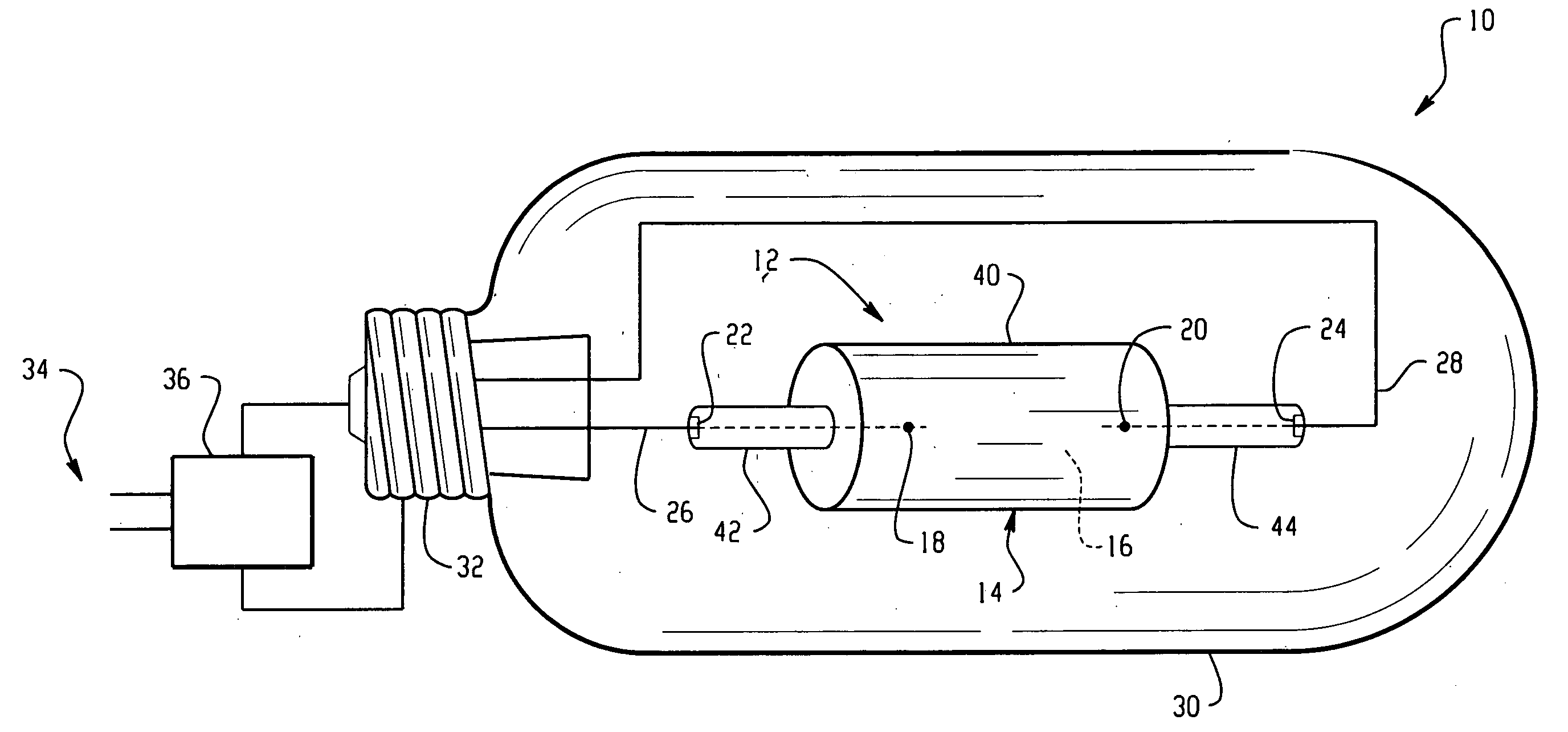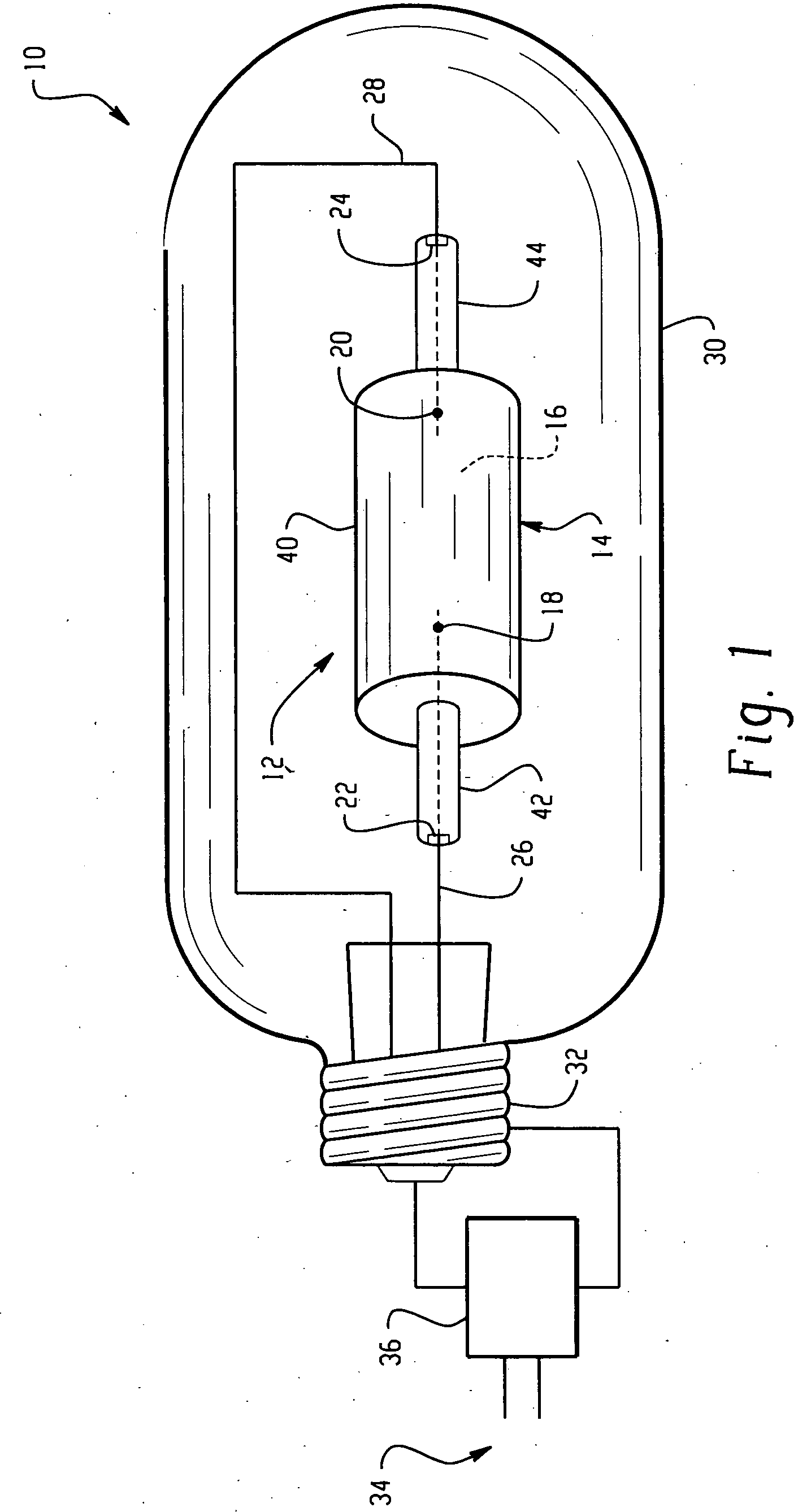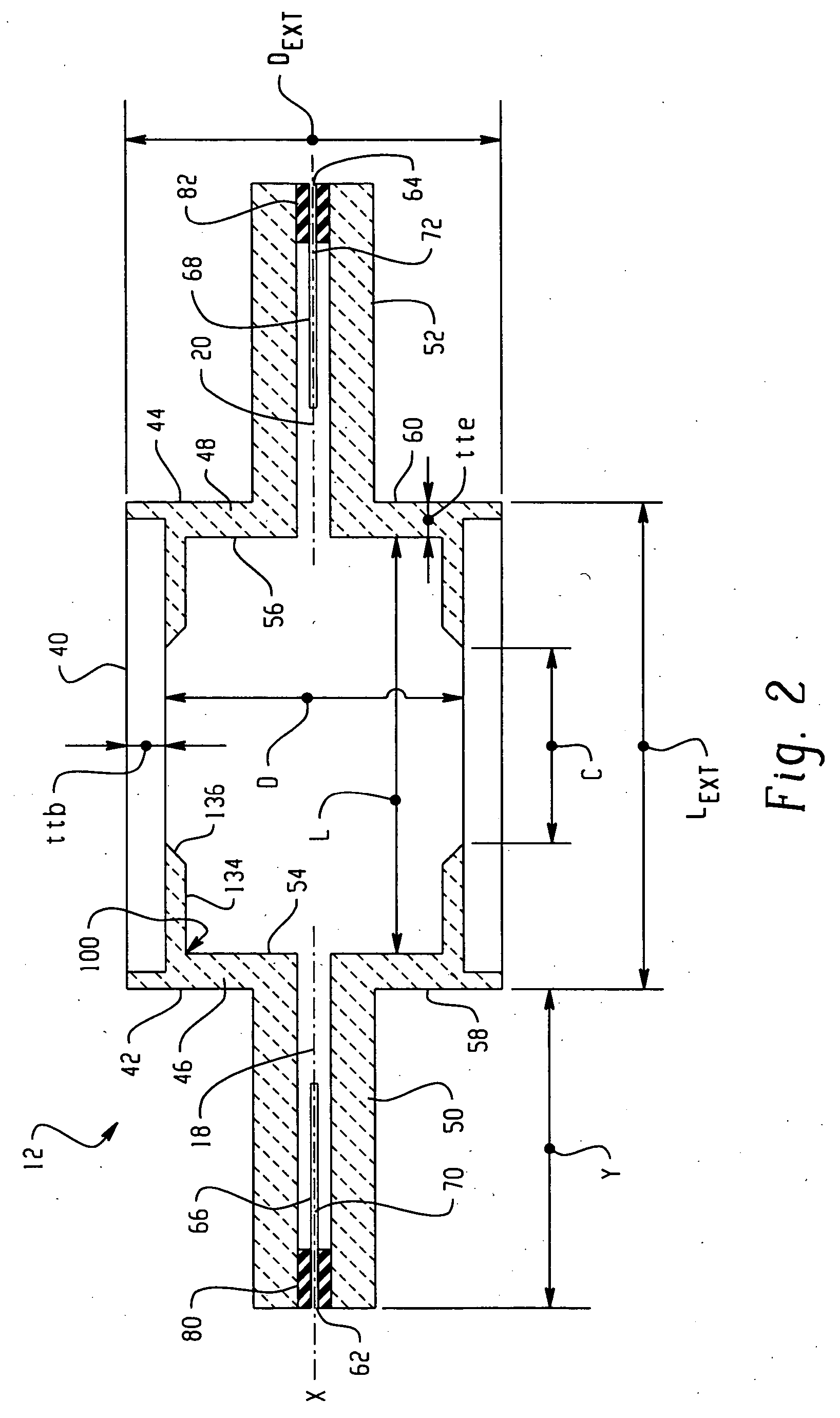Ceramic metal halide lamp with optimal shape
a ceramic metal halide and optimal shape technology, applied in the field of electric lamps, can solve the problems of depletion of filler constituents, certain reactive properties of fused quartz, and high operating temperature, and achieve the effect of improving performance and li
- Summary
- Abstract
- Description
- Claims
- Application Information
AI Technical Summary
Benefits of technology
Problems solved by technology
Method used
Image
Examples
example 1
[0059] Arctubes are formed according to the shape shown in FIG. 2 from three component parts, as illustrated in FIG. 4. A fill comprising 20.6% NaI, 2.1%Tl, 12.8% DyI3, 6.5% HoI3, 6.5% TmI3, 0.8% CeI3, 48% CaI2, and 2.7% CsI is used. The metal halide arctubes are back filled with a rare gas, comprising Ar and a small addition of Kr85. The cold fill pressure is 130 Torr. The arctubes are assembled into lamps having an outer vacuum jacket and a quartz shroud to contain possible arctube rupture, and which are run on North American “Pulse Arc” ballasts. The arctube leg geometry, leadwire design, seal parameters, and outer jacket are the same for all lamps tested, except that the 320 W has different electrodes.
[0060] Lamps formed as described above are run in a vertical orientation (i.e., as illustrated in FIG. 3) with the lamp cap positioned uppermost. TABLE 1 illustrates properties of the lamps and properties during operation. Each data point represents an average of a population of l...
example 2
[0065] Arctubes are formed as for Example 1. according to the shape shown in FIG. 2 from three component parts, as illustrated in FIG. 4. A fill comprising by weight 35.3% NaI, 4.9% TlI, 6.3% DyI3, 3.2% HoI3, 3.2% TmI3, 41.6% CaI2 and 5.5% CsI is used. The metal halide arctubes are back filled with a rare gas, comprising Ar and a small addition of Kr85. The cold fill pressure is 130 Torr. The arctubes are assembled into lamps having an outer vacuum jacket and are run on a HPS ballast. The arctube leg geometry, leadwire design, seal parameters, and outer jacket are the same for all lamps tested. Small changes to the design of the electrode accommodate the different arc currents at the different power loads.
[0066] Lamps formed as described above are run either in a vertical orientation VBU (i.e., as illustrated in FIG. 3) with the lamp cap positioned uppermost, or in a horizontal orientation HOR (as illustrated in FIG. 2). TABLE 2 illustrates properties of the lamps and properties du...
PUM
| Property | Measurement | Unit |
|---|---|---|
| power | aaaaa | aaaaa |
| thickness | aaaaa | aaaaa |
| power factor | aaaaa | aaaaa |
Abstract
Description
Claims
Application Information
 Login to View More
Login to View More - R&D
- Intellectual Property
- Life Sciences
- Materials
- Tech Scout
- Unparalleled Data Quality
- Higher Quality Content
- 60% Fewer Hallucinations
Browse by: Latest US Patents, China's latest patents, Technical Efficacy Thesaurus, Application Domain, Technology Topic, Popular Technical Reports.
© 2025 PatSnap. All rights reserved.Legal|Privacy policy|Modern Slavery Act Transparency Statement|Sitemap|About US| Contact US: help@patsnap.com



